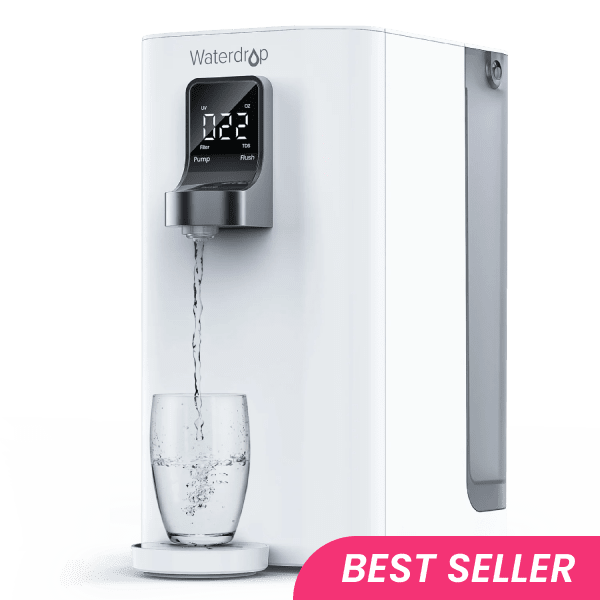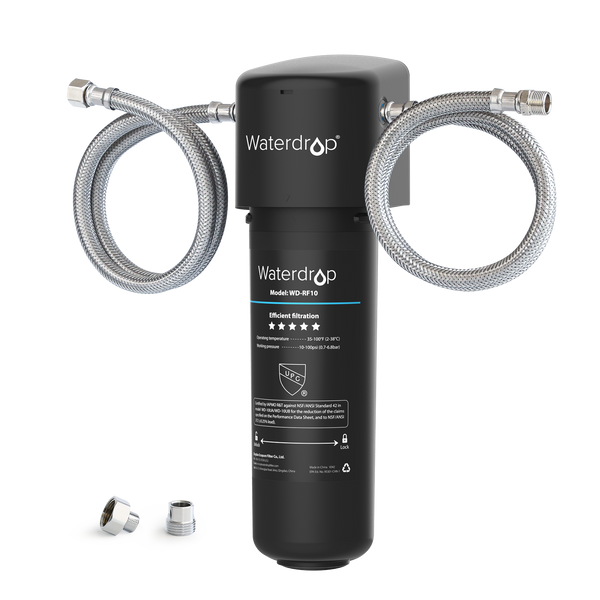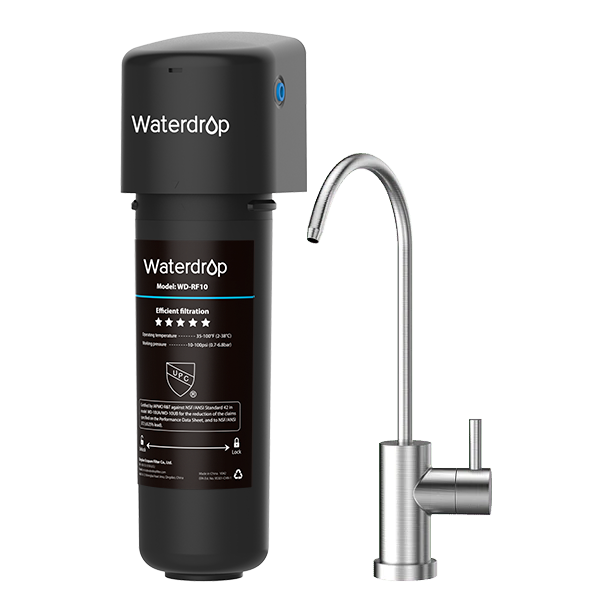What Is Ultrafiltration Membrane And How Does It Work?
by Dr. Jonathan Doyle - Updated March 02, 2021
Ultrafiltration(UF) is a physical filtration process that uses home water pressure
to push water through the semipermeable membrane to get rid of particles larger than membrane pore size in
water.
The ultrafiltration membrane utilized during the filtration process is a kind of
hollow fibers with pore size ranging between 0.01 to 0.1 micron, which is several thousand times smaller than a
human hair.
While water feeds in, the particles larger than the pore size would be retained on
the surface of the membrane, whereas water and beneficial minerals that are smaller than the pore size would
pass through and become the drinkable water.

One highlight of the ultrafiltration membrane is that it does not remove all the
dissolved minerals. This could be considered a pro if the home water TDS is at a good level since a certain
amount of the retained minerals are beneficial to our health. Yet, it would be a shortcoming if the source water
has a high TDS level, as overmuch TDS would significantly affect the water taste.
So, you’d better check
your home water TDS level before you buy a UF system.
According to an authority review conducted by the United States, Canadian, World
Health Organization (WHO) and European Community (EC), the US recommended maximum TDS level is 500 mg/L.
If your home water TDS level has already exceeded this value, we suggest you choose
a reverse osmosis system that could significantly reduce
TDS.
What contaminants does the UF membrane remove?
The UF membrane is very effective in reducing rust, sediment, chlorine taste and
odor, benzene, crypto, bacteria; it could also partially reduce algae, chloride, copper, lead, mercury; whereas
it has no effect on chemicals and TDS.
Frequently asked questions about the UF membrane
Does Ultrafiltration Need Electricity?
Unlike the reverse osmosis filtration that needs a pump to push water past the
membrane by increasing water pressure, ultrafiltration could work well with standard home water pressure.
Therefore, most of the ultrafiltration system does not require electricity.
What’s the difference between ultrafiltration and reverse osmosis?
Ultrafiltration and reverse osmosis are all physical filtrations that use pressure
to push water through the semipermeable membrane, and block impurities larger than the membrane pore size at the
outer surface of the membrane.
The main difference between them is filtration accuracy. The ultrafiltration
membrane pore size ranges from 0.01 to 0.1 microns, whereas the reverse osmosis membrane has a more fine pore
size of 0.0001 microns. Thus the RO membrane could remove impurities that are much finer, such as TDS.
Given the difference in pore size, RO systems usually need a pump to increase
pressure, while ultrafiltration systems can work well with standard home water pressure. That explains why most
RO systems need electricity supply but UF systems don’t need it.
What’s the difference between UF filtration and UV filtration?
UF removes impurities larger than the pore size by filtering them out. UV only
works for microorganisms like viruses and bacteria in water by killing them with UV light.
Different types of ultrafiltration systems
There are many kinds of UF filters on the market to meet different customers’
needs, like the whole house filter, which installed at the point of entry where water comes into your home from
a municipal supply. As well as point of use filter, like under-sink UF water filter and portable water filter
straw.
Whole House Ultrafiltration Systems
The whole house ultrafiltration system is a point-of-entry water filtration system
that serves the entire home, including the water tube, faucet, shower head, etc.
With the 0.01-micron UF filter, it could eliminate different kinds of impurities
and contaminants for the whole home and greatly increase the service life of the tubes, faucets, and any other
filters present down-line.
But the drawbacks of the whole house systems are that they usually need to be
installed when you build the house. Furthermore, they are not comparatively affordable, most of which cost
several thousands of dollars. However, point-of-use ultrafiltration systems only take a few hundred dollars or
even less.
Under-sink Ultrafiltration System
Under-sink UF membrane filters are very popular for homes and families for the
budget-friendly price and excellent filtration performance. Let's take Waterdrop smart under-sink UF system and
inline under-sink UF water filter for example.
Smart Under-Sink UF System
The smart under-sink filter smart under-sink ultrafiltration system has a very
similar appearance to the RO system. It also takes multi-stage filters and has a smart filter life indicating
system on the front panel.
It uses polypropylene, activated carbon as pre-filters to remove most of the large
eye catchable impurities including colloids, sediments, rust, absorb chlorine taste and odor, fluoride as well
as most VOCs in water.
After that, the water would be filtered by the UF membrane filters with a pore size
of 0.01 micron, where the bacteria, superfine rust and sediments, lead and other heavy metals would be removed.
The filtered water then followed by another activated carbon filter to improve the taste and eventually flow to
a dedicated faucet for home drinking, cooking, etc.

The main difference between the smart UF under-sink system and the modern RO system
is the filtration efficiency——the UF filter cannot remove the superfine dissolved minerals in water as discussed
above.
Under-Sink Inline Ultrafiltration Water Filter
The inline ultrafiltration water filter is a more compact filtration system
compared with the smart UF water filter.
It takes an all-in-one design that puts different filter materials like a polyester
membrane, activated carbon block, KDF, UF membrane all together in one composite filter to get rid of the
harmful substances.

Benefit from the all-in-one design, the inline filter takes very little space under
the counter and especially fits for small apartments, RVs, etc. Just connect it between the tap water input and
output faucet, you will be accessible to refreshing, clean water from the tap at the minute.
Portable Water Filter Straw
Ultrafiltration membranes can also be used in portable water filters for drinking
water directly from rivers, lakes, and other water resources outdoors.
Also takes an all-in-one design, the portable water filter straw is a four-stage
filtration made out of pre-filter fabric, UF membrane, activated carbon filter and post polyester membrane.
Though the filter itself has a smart frame, the filtration efficiency is powerful.
Most of the harmful substances such as chlorine, rust, colloids, sediments, bacteria and heavy metals could be
effectively reduced from the raw water.

The compact design allows you to put it in your backpack and takes it everywhere,
making it possible for you to access safe water anywhere, anytime.
Takeaway
It is important to understand the working principle of the filtration system before
choosing a product. Only in this way, you could understand what kind of filtration works best for your water and
whether the system could meet your needs or not. I hope this article would be useful in helping you make the
right choice.
Contaminants Detected in Fruitland Water Special Service District
30
Contaminants
EXCEED EWG HEALTH GUIDELINES
EXCEED EWG HEALTH GUIDELINES
30 Total Contaminants in Your Water
Water Provider
Fruitland Water Special Service DistrictPopulation Affected
120,000Water Source
Ground waterExceeds Guidelines
Others Detected


















